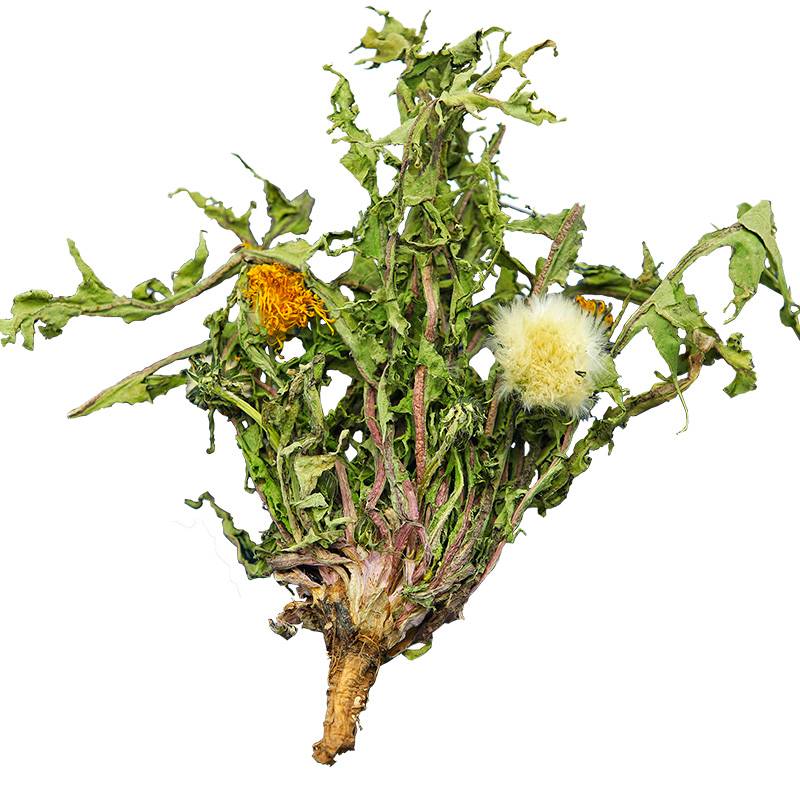민들레 뿌리 추출가루 10:1
출처:민들레 루트
라틴어 이름:Taraxacum mongolicum Hand.-Mazz.
활성 성분:플라보노이드, 페놀산, 트리테르펜, 다당류
규격:10:1
시험 방법:TLC
외관:갈색 노란색 미세 분말
잔류농약:(EC) No 396/2005기준을 준수합니다
- 설명
- 데이터 시트
- 인증 서
-
민들레뿌리추출분말이란 무엇인가?
민들레 뿌리 추출 분말은 민들레, 알칼리 민들레 또는 같은 속의 여러 종의 건조 된 뿌리를 Asteraceae 과에서 추출, 정제 및 스프레이 건조하여 얻은 갈색 분말입니다.
Dandelion extract contains a variety of active ingredients, especially high levels of caffeic acid and chlorogenic acid. It has broad-spectrum antibacterial, choleretic hepatoprotective, anti-endotoxin, stomachic and immune-boosting effects, and is used in the treatment of acute mastitis, lymphadenitis, and urinary tract infections.
그린스프링기술은 민들레 뿌리 추출물 분말 10:1을 초임계 추출에 의해 공급하여 안정적인 특성, 우수한 유동성, 분말성을 가진 활성 분말을 얻습니다.
2000년 설립, 그린 Spring is a leading plant extract technology company in China. It produces according to ISO, HACCP, and other quality standards, and its products implement the highest international industry standards. With 7 certifications and 7 patents, our products are sold in more than 62 countries worldwide, and samples are available for R&D testing.
규격:
제품 이름
민들레 추출
라틴어 이름
Taraxacum mongolicum Hand.-Mazz (한국어).
원본
민들레 루트
유효 성분
플라보노이드, 페놀산, 트리테르펜, 다당류
규격
10:1
시험 방법
TLC
외모
브라운 노란색 고운 가루
농약 잔류 물을
(EC) No 396/2005 표준을 준수합니다
규제:
EU 규정에 부합한다.
견적을 찾고 계십니까?Benefits:
Lower Blood Pressure
The polysaccharides, phenolic acids (chicoric acid, chlorogenic acid), terpenes (dandelion sterols), and sesquiterpene lactones active in dandelion extract are known to lower blood sugar. Dandelion chloroform extract can be used as a hypoglycaemic agent for the treatment of type 2 diabetes mellitus by promoting glucose uptake in L6 cells. Hou Liran et al. showed that dandelion polysaccharides had a significant hypoglycaemic effect on tetracosan-induced diabetic mice. Dandelion terpineol has an antidiabetic effect and shows significant effects in reversing insulin resistance, which can be investigated as an insulin resistance reversal agent.
Protection of Cardiomyocytes
Total flavonoids from dandelion extract effectively inhibited apoptosis of cardiomyocytes in mice with viral myocarditis. Wang et al. demonstrated that dandelion sterols had a protective effect on mouse cardiomyocytes (CSC) in a model of ischemia-reperfusion-induced oxidative injury, which could be attributed to the up-regulation of the expression of protein kinase 1/2 to inhibit the oxidative injury of CSC cells caused by I/R.
Anti-inflammatory
Xiao Chiu-yung et al. showed that dandelion extracts TMP (total polysaccharide of dandelion) inhibited the mRNA expression of inflammatory factors (cyclooxygenase-2, tumor necrosis factor-alpha, interleukin-6, and interleukin-1β) in a dose-dependent manner. Wang Qian et al. demonstrated that dandelion polysaccharide has a therapeutic effect on ulcerative colitis, and further clarified that dandelion polysaccharide can inhibit inflammation and protect and repair mucosal tissues by effectively lowering the levels of interleukin-6, interleukin-6 receptor, and glycoprotein 130 (gp130).
Dandelion flavonoids, the main anti-inflammatory component of dandelion, significantly inhibited xylene-induced auricular swelling in mice, egg white-induced foot-plantar swelling in rats, and cotton ball granuloma in rats. Yang Nan et al. demonstrated that organic acids can reduce lipopolysaccharide (LPS)-induced inflammation in bronchial epithelial (NHBE) cells, a function associated with the modulation of the TLR4/IKK/NF-kappa B pathway. WANG SHASHA et al. suggested that dandelion sterols have a potential protective effect against Fuchsin complete adjuvant (FCA)-induced arthritis in rats. In addition, dandelion volatile oil at concentrations of 40 μg-mL-1 and 80 μg-mL-1 had a significant inhibitory effect on the production of nitric oxide (NO) and tumor necrosis factor-α (TNF-α). Some studies have shown that the anti-inflammatory effect of dandelion may also be related to heptaphyllum lactone.
Antibacterial
Dandelion extract has some antibacterial activity against Escherichia coli, Salmonella, and Staphylococcus aureus. The current study shows that the antibacterial effect of dandelion extract is related to flavonoids, phenolic acids, and polysaccharides. Wang Xiaoying The study showed that the total flavonoid extract of dandelion has a significant antibacterial effect on Pseudomonas aeruginosa, and the antibacterial effect is significantly enhanced with the increase in concentration.
Its bacteriostatic mechanism is: to accelerate the destruction of the integrity of the cell membrane, resulting in metal ions, proteins, and saccharides exudation, so that the cell metabolism is disrupted, and ultimately the cell death, plays a bacteriostatic effect. Dandelion polyphenols have certain antibacterial effects on Staphylococcus aureus, Bacillus subtilis, Escherichia coli, and Salmonella, and the antibacterial effects on Staphylococcus aureus and Bacillus subtilis are more obvious.
Applications:
In Cosmetics:
Dandelion extract has antimicrobial properties and is rich in vitamins A, C, E, and K, which protect the skin from free radical damage. It is also incorporated into skin care products for its anti-inflammatory properties. Scientific studies have shown that dandelion leaf and flower extracts help protect human dermal fibroblasts from UVB damage and cellular aging. Dandelion extract powder has been used in cosmetics as a natural ingredient.
For Feed Product:
The dandelion extract can reduce swelling and detoxification, help digestion, and strengthen the spleen and stomach. It enhances appetite, promotes growth, and can prevent a variety of digestive and respiratory diseases, especially porcine streptococcal disease, with remarkable efficacy, and has been used as a feed additive.
For Health Products:
Dandelion root aqueous extract can effectively inhibit the proliferation of human gastric cancer cells, dandelion roots, stems and leaves in the oligofructose have an auxiliary anti-diabetic, anti-rheumatic, anti-inflammatory, and anti-cardiogenic disorder. Dandelion extracts have been used as additives in various health products.
-
다운로드
민들레 뿌리 추출 분말 101 COA


 영어
영어 프랑스
프랑스 스페인
스페인 러시아
러시아 한국
한국 일본
일본













